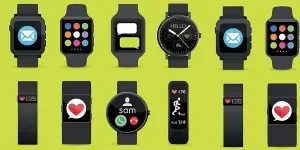Monitor connections are one of those essential components that can go overlooked when you’re rushing to set up your latest tech. And while these display connections have been with us for as long as the devices we connect them to, there have likewise been a whole host of changes to them over the years. This evolution has in turn led to there being multiple connection types to serve a wide range of purposes. It has also made knowing which variety you need to get the job done harder than it has ever been.
That’s why, in this guide, we’ll take a look at the most common display connection types, what they are used for, and the differences between them.
Table of Contents
What are display connection types?
What are the most common display connection types?
1. Video Graphics Array (VGA)
2. Digital Visual Interface (DVI)
3. High-Definition Multimedia Interface (HDMI)
4. DisplayPort (DP)
5. USB Type-C
6. Thunderbolt
Which display connection is right for you?
What are display connection types?
Display connections refer to connectors that link a computer (more specifically, the graphics card) or other devices to a monitor, enabling the transmission of video signals between the device and the display screen. The latter features display ports, which are the various input and output interfaces that enable the connection between the monitor and the device (digital or analog).
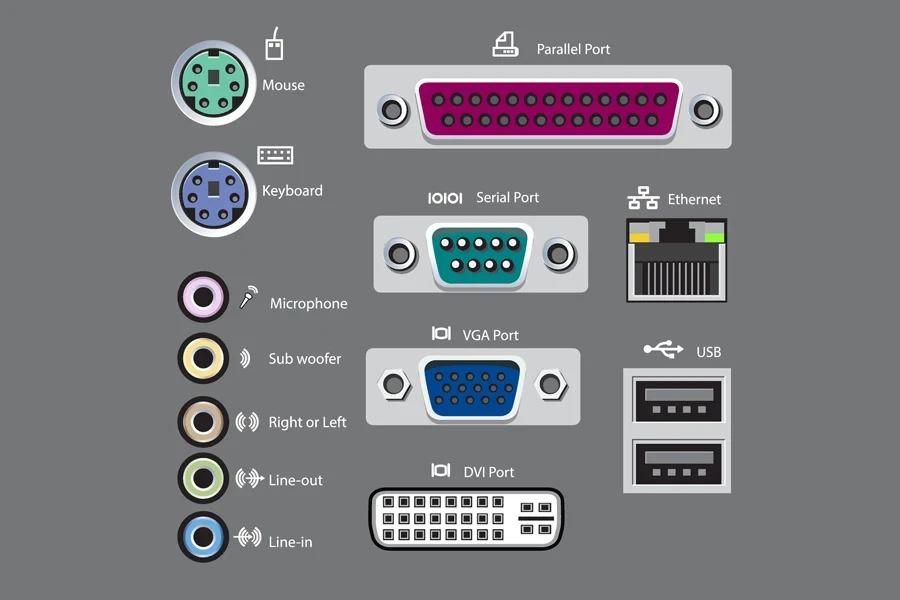
There are many display connection types out there, and the difference between them stems from the technology available at the time they were first introduced to the market, with each type featuring different characteristics, such as the ability to support video-audio displays, higher resolutions, etc.
What are the most common display connection types?
There are six common types of display connection, but most monitors won’t feature all of them. Most monitors nowadays have at least one of the three of the most common display connection types, which are HDMI, DisplayPort, and USB Type-C. Some monitors may also have older connection types, such as VGA and DVI, but you will require a connection adapter to use these with modern devices.
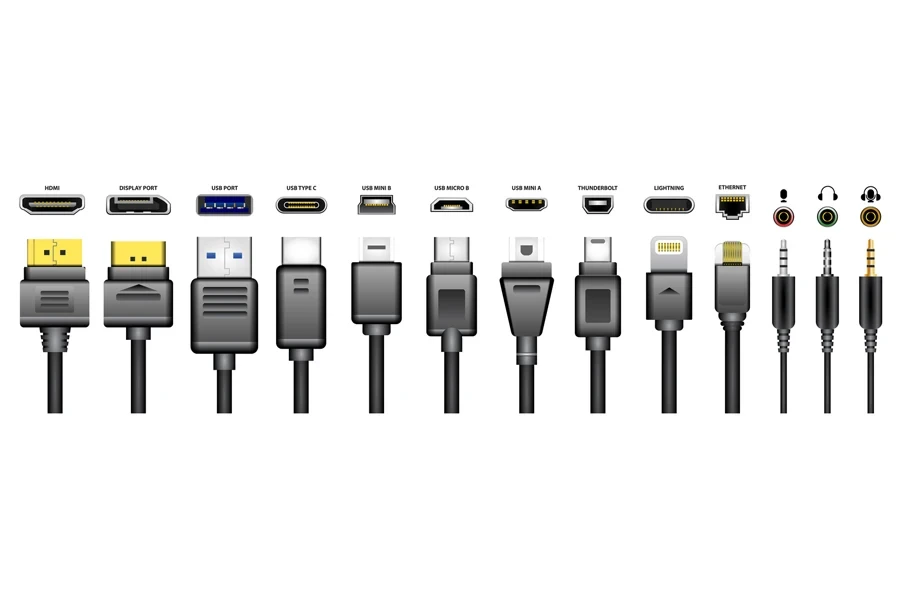
Let’s take a closer look at some of the most common display connection types:
1. Video Graphics Array (VGA)
VGA is considered the oldest connection standard that still exists in the market. It was introduced to the world in 1987 by IBM and was used in all monitors, projectors, TV sets, and laptops.
VGA supports video signals only, and even though it has been gradually replaced by other connection types, many devices, such as projectors, are still equipped with VGA ports. Some older graphic cards also have VGA ports.
VGA connectors are usually blue, have 15 pins, and feature a 640×480 pixels resolution.
2. Digital Visual Interface (DVI)
DVI was introduced to the market in 1999 as an alternative support for higher resolutions. It was used in many devices and graphic cards in the early 2000s and maintained its position as the most popular connection standard until around 2015.
DVI also supports video signals only, but unlike VGA, which transfers only analog signals to the device, DVI also transfers digital signals, which leads to higher display resolutions (full HD) and better quality.
DVI connectors come in three main variants: DVI–I (integrated), DVI–D (digital), and DVI–D Dual Link, which provides higher data transfer rates.
3. High-Definition Multimedia Interface (HDMI)
HDMI was introduced to the market in late 2003 and is now considered the standard display connection type. It can transfer both audio and video signals to a device (unlike older connection standards where separate cables were needed for audio-visual displays).
This digital connector comes in different sizes (mini-HDMI, micro-HDMI, etc.), and it’s also compatible with old wire connectors.
HDMI connectors have gone through many iterations and improvements to keep up with evolving technologies, resolutions, and formats, helping them to become the default ports found in the majority of today’s devices (TVs, laptops, gaming consoles, Blu-ray players, etc.).
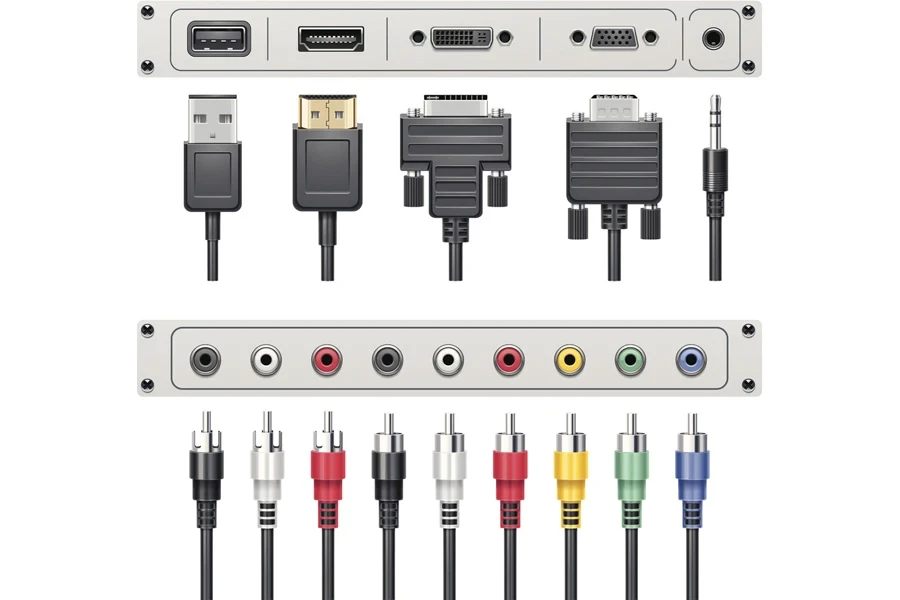
4. DisplayPort (DP)
DisplayPort was developed by a group of computer and chipset manufacturers in an attempt to replace VGA and DVI. DP was first introduced to the market in 2006, and even though it has the ability to transfer high-quality video and audio signals, it couldn’t compete with HDMI.
DP is actually one of the best connectors for audio and video signals, which is why it’s still supported by some of the top-tier gaming PC monitors.
5. USB Type-C
USB Type-C connectors are gradually becoming more common thanks to their small, versatile nature. Today, it is still mostly used for laptops and smartphones as well as mice, keyboards, modems, printers, cameras, scanners, card readers, flash drives, players, hard drives, optical drives, etc.
USB-Type C specifically provides high-resolution video displays and a high data transmission speed, making them great for sending files and connecting peripherals.
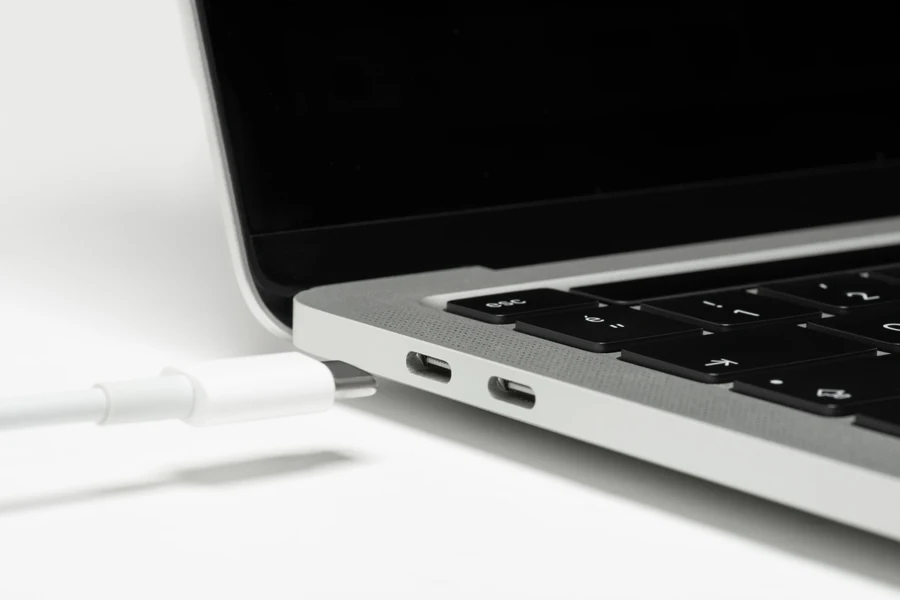
6. Thunderbolt
Thunderbolt is a hardware interface developed by Intel and Apple that allows high-speed data transfer and connection between external peripherals and monitors to a computer.
Thunderbolt cables can support staggering speeds of up to 40 Gbps, which is why they are considered the best option for high-resolution display monitors.
Which display connection type should you choose?
Using the right type of monitor port helps to maximize the quality of what is displayed on your monitor, while choosing the wrong type will cause compatibility issues and lead to a poor image and video quality experience.
Most modern monitors are equipped with at least one of the three most common ports covered in this article, so first check your available ports before choosing the right one for you.
| Type | Resolution (up to) | Best for |
| VGA | 640×480 pixels | Desktop setups |
| DVI | 1920×1200 pixels | Video-only displays and older systems |
| HDMI | 10k pixels | High-quality everyday use |
| DP | 8k pixels | Gaming and high-resolution streaming |
| USB-C | 16k pixels | Peripherals, etc. |
| Thunderbolt | 8k pixels | Multi-monitor setup and graphic design |

For example, if you want to enjoy great video quality and stunning audio, HDMI is your go-to. If you’re a gaming enthusiast, the DisplayPort is your best choice and is great for high-resolution displays. DVI is a good option for video-only displays and is perfect for older systems or 144Hz at 1080p. Thunderbolt is perfect for multi-monitor setups, and VGA is best used for desktop monitors. Finally, if you’re connecting peripherals, it’s more and more likely that you’ll need USB Type-C.
Read also: The Ultimate Guide to Gaming Monitors: Trends, Innovations, and Market Leaders
